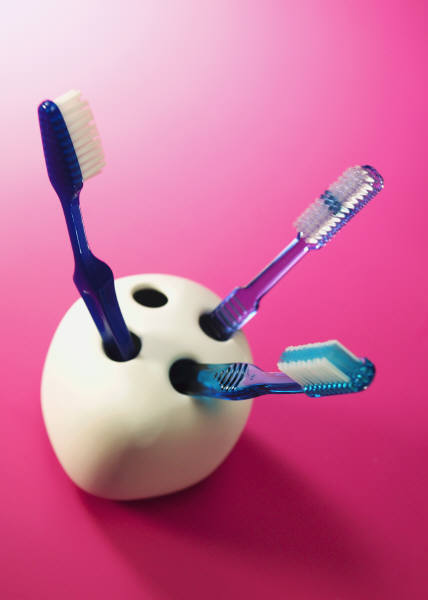
How Clean is Your Toothbrush?
Your toothbrush is a trusted tool that helps maintain a healthy and beautiful smile. But did you know that your toothbrush can harbor bacteria. If not cleaned on a regular basis, these bacteria can easily be transferred to your mouth?
Most people are familiar with the recommended guidelines: brush at least twice a day, floss daily, and visit the dentist at least once every six months. Proper maintenance and routine replacement of your toothbrush is also a crucial, however often ignored, part of your oral health routine. Here are a few tips which might help to limit the risk of illness due to a dirty toothbrush.
Do not share your toothbrush. It is possible to catch a cold, bacterial infection or blood-borne disease from a toothbrush; help avoid this by not sharing toothbrushes.
Avoid cross contamination. If you share a toothbrush holder or toothpaste with your significant other, roommate, or children, be aware that cross contamination can occur. If one person is sick, their infectious germs can be transferred to your toothbrush if the toothbrushes accidentally touch. In addition, their germs could touch the opening of the toothpaste tube and transfer the germs to your toothbrush.
Rinse. Thoroughly rinse toothbrushes with tap water after brushing to remove any remaining toothpaste and debris.
Storage. Toothbrush storage is an important part of keeping it sanitized.
- Store your toothbrush in a ventilated location so it thoroughly dries between brushings.
- Do not store toothbrushes in a covered container as the moist, dark environment make it more likely to trigger bacteria growth.
- Offer protection from toilet flushing by closing the toilet lid before flushing and keeping your toothbrush away from the toilet or in a protected area.
When you flush the toilet, particles are shot up in the air as much as ten inches. These particles settle on all surfaces in your bathroom, including your toothbrush.
- Store your brush in an upright position if possible. If more than one brush is stored in the same holder or area, keep the brushes separated to prevent cross-contamination.
Replacement. You should replace your toothbrush every three to four months or as the bristles become frayed and worn. Toothbrushes should also be replaced after an illness.
Leave a reply →